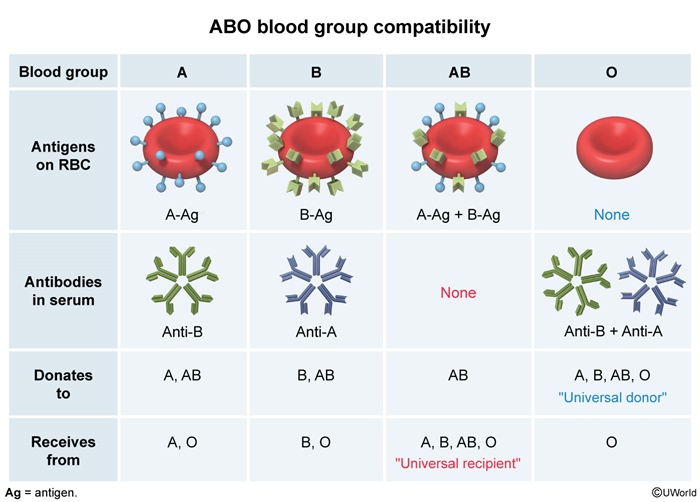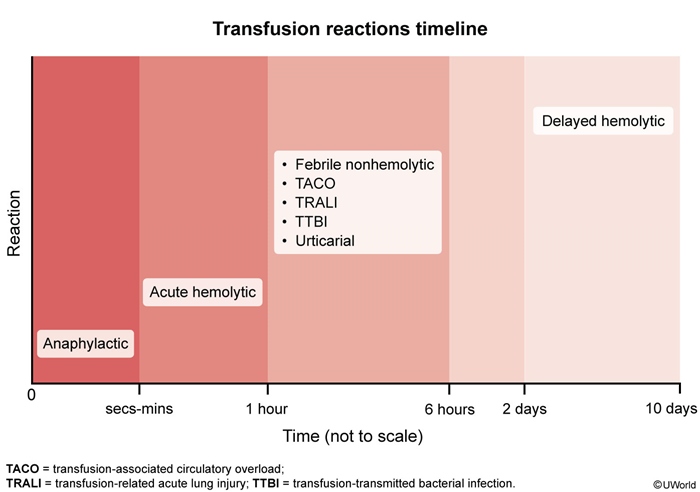Transfusion Reactions
Article Sections
Introduction
Blood transfusion reactions are broadly classified into 4 categories based on time course (acute vs delayed) and mechanism (immunologic vs nonimmunologic). This article describes the major types of reactions across the categories and clinical approaches for addressing transfusion reactions in real time.
Acute immunologic
Acute hemolytic transfusion reactions (AHTRs) are mediated by ABO incompatibility (Figure 1). Preformed recipient antibodies immediately destroy the donor red blood cells (RBCs), causing intravascular hemolysis. The reaction presents with abrupt onset of fever, rigors, and hypotension due to proinflammatory cytokine release. Spillage of hemoglobin (directly nephrotoxic) causes acute kidney injury with hemoglobinuria (eg, reddish urine) and flank pain (eg, from renal edema). Renal failure is usually oliguric due to tubular obstruction by necrotic debris. Massive complement activation can cause endothelial damage and disseminated intravascular coagulation (DIC).
Continue Learning with UWorld
Get the full Transfusion Reactions article plus rich visuals, real-world cases, and in-depth insights from medical experts, all available through the UWorld Medical Library.
Figures

